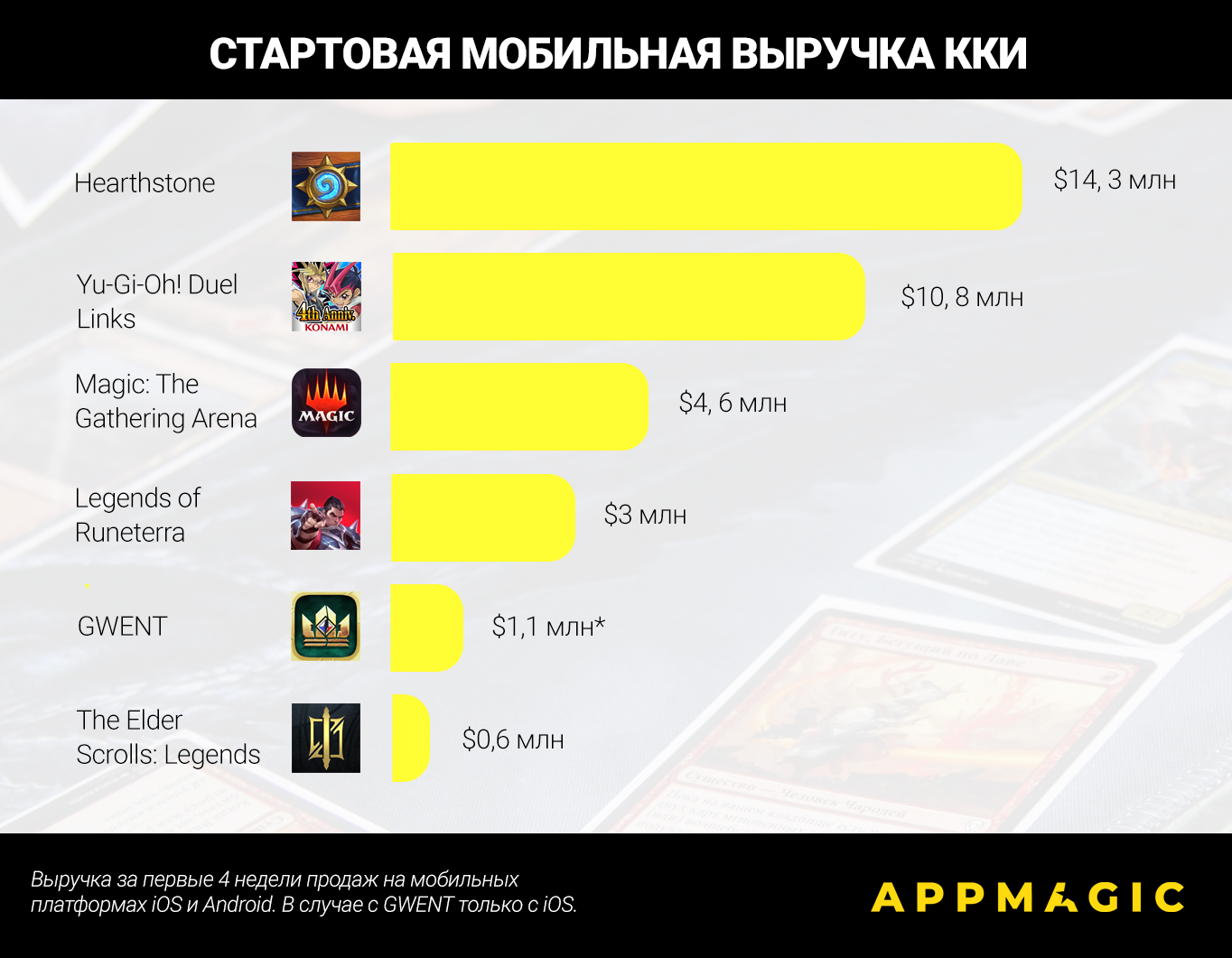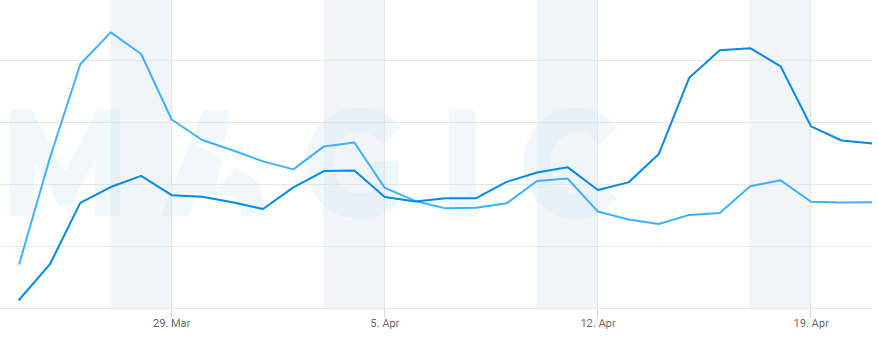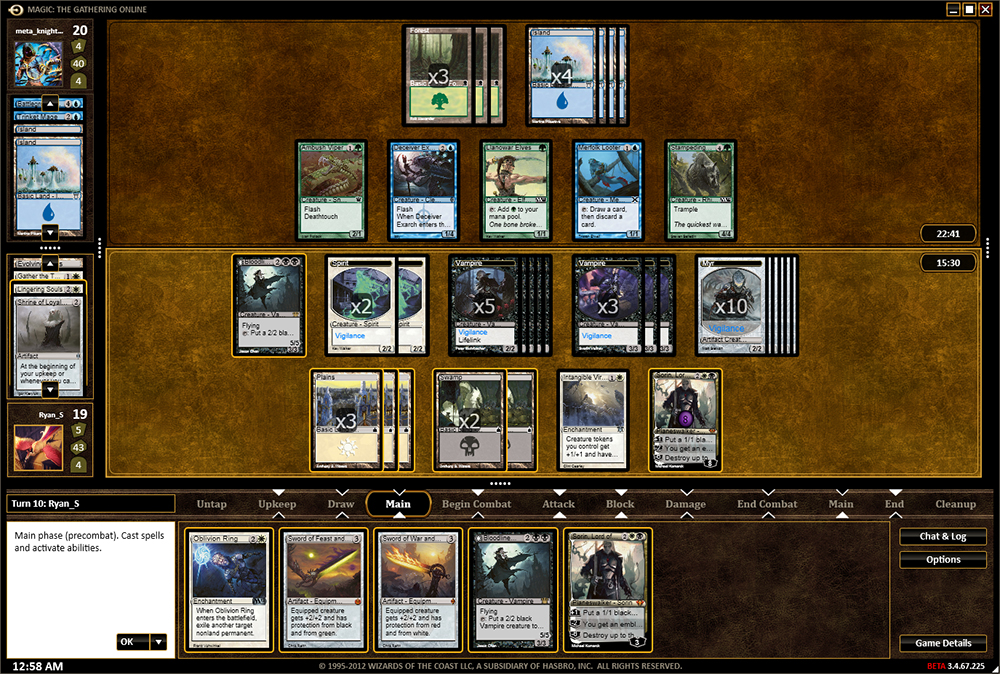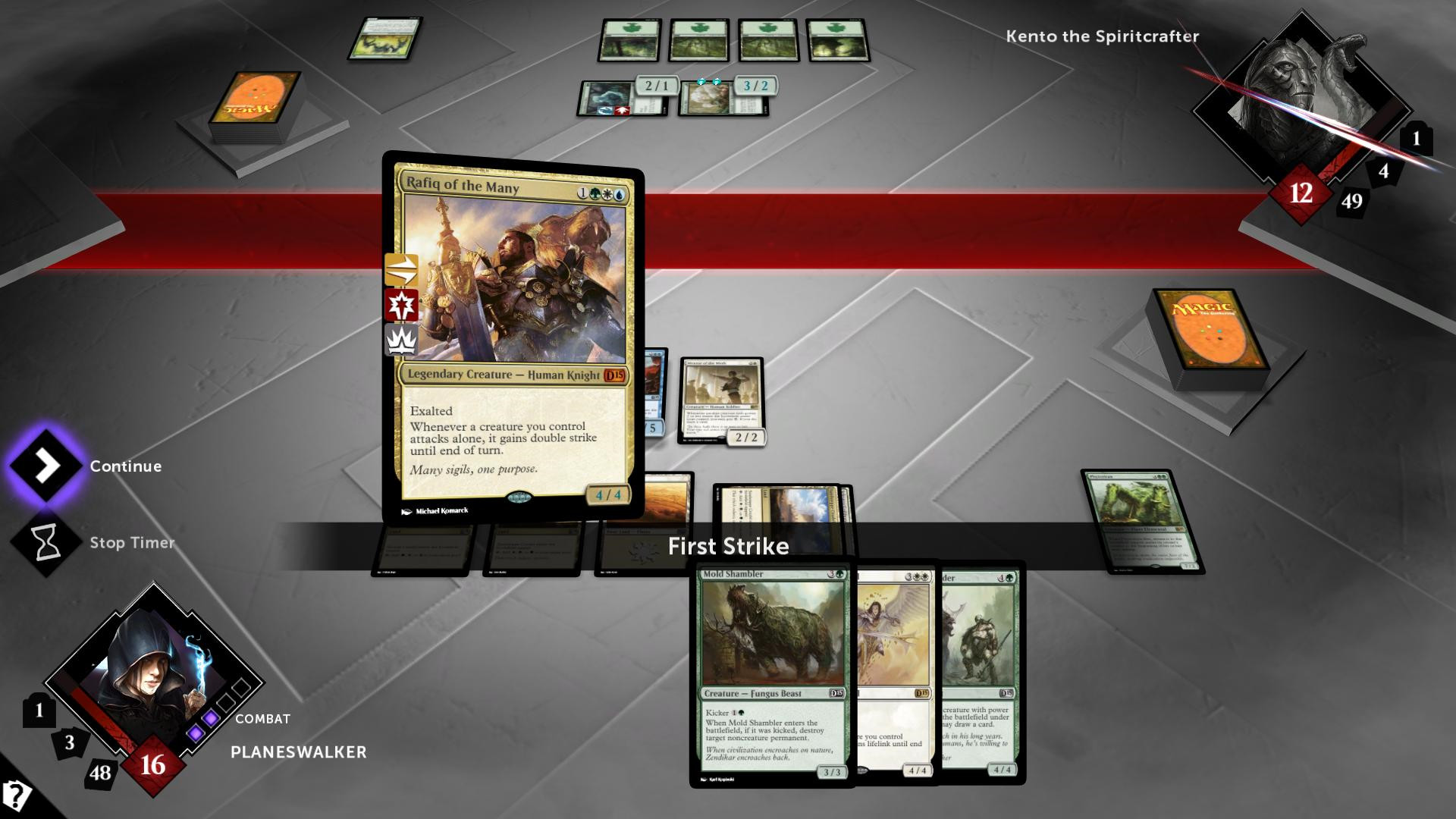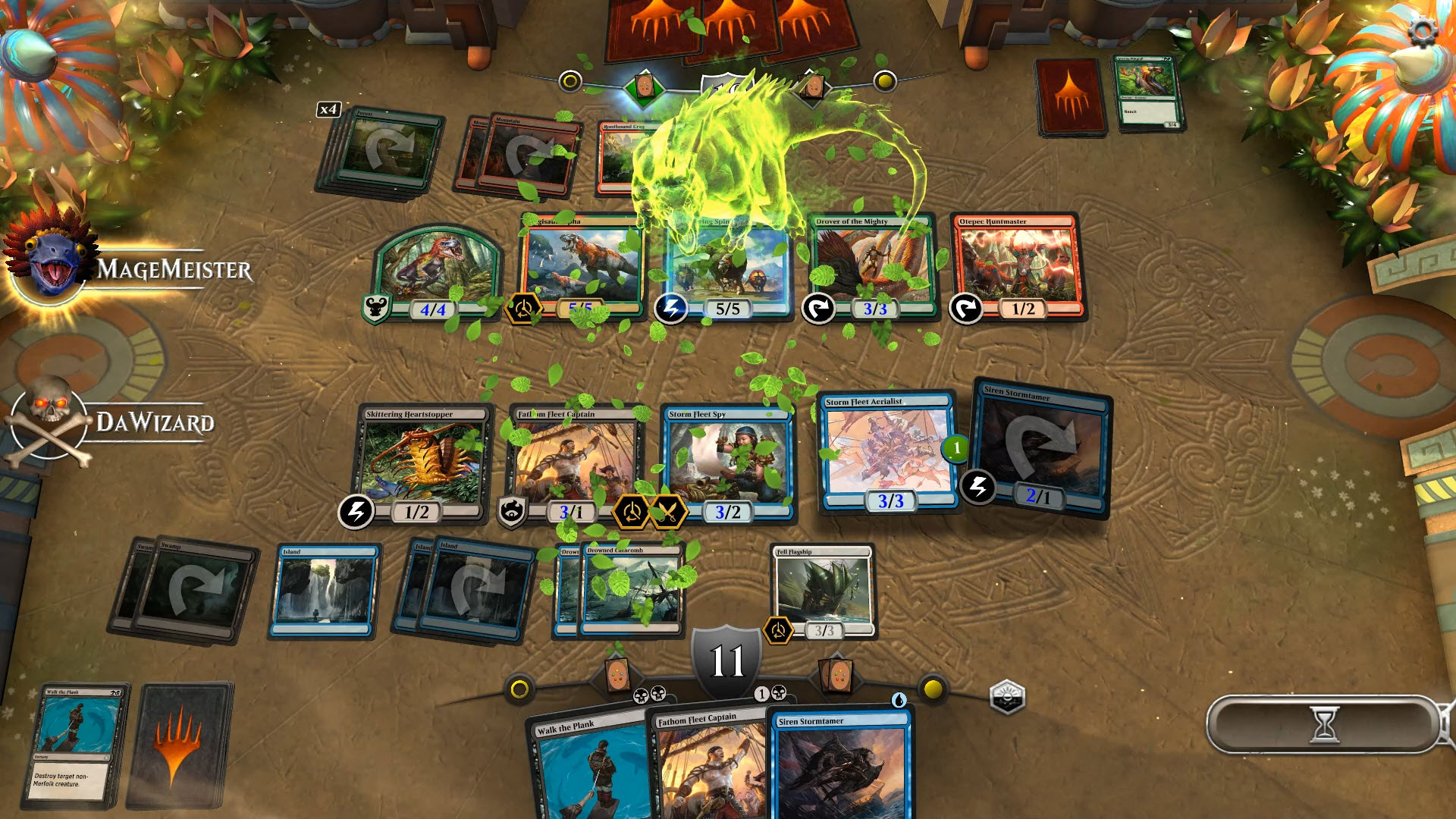A month ago, on March 25, the global launch of the mobile version of Magic: The Gathering Arena took place. In four weeks, she earned $4.6 million. This is one of the most successful launches of CCI on mobile platforms.
Art for Magic: The Gathering Arena
This is reported by the analytical service AppMagic.
Remark: Collectible card games (CCI) should not be confused with battlers.
- CCI: the main monetization tool is the purchase of boosters with cards, and the core is built on the skills of the player and PvP in real time.
- Battlers: monetization encourages you to spend money on improving cards/ characters (there is no pumping in the KKI at all), as for the core, it is automated, you can even skip it. PvP is asynchronous in nature.
Mobile Release Magic: The Gathering Arena
Magic: The Gathering Arena is a mobile version of the desktop game of the same name, whose beta version appeared in the fall of 2017, and a full—fledged release on the desktop took place two years later.
In terms of starting earnings, mobile MTG is second only to Hearthstone, which collected $14.3 million in the first month, and Yu-Gi-Oh! Duel Links, which earned $10.8 million at the start. Other CCIs, which have been on the radar in recent years, earned much less in the first 4 weeks. Moreover, for most of the “catching up”, the first month of sales remained the most successful in their “career”.
There are few KKI on the market, only a few hits
More than half of Magic: The Gathering Arena’s earnings came from the United States — $2.6 million. Almost a million dollars more for Japan.
The total number of downloads of the game to date has barely passed the 1.5 million mark. This makes the game the second most successful CCI at the start in terms of revenue to installation ratio:
- Yu-Gi-Oh! Duel Links — $4,34;
- Magic: The Gathering Arena — $3,05;
- Hearthstone — $1,53;
- GWENT: The Witcher Card Game — $0,77;
- The Elder Scrolls: Legends — $0,55;
- Legends of Runeterra — $0,47.
Downloads of Magic: The Gathering Arena are dropping after the release. Against this background, revenue is either at a plateau of $ 150 thousand per day, or after updates it rises to $ 300 thousand per day.
Blue line — revenue, blue line — downloads
Maxim Samorukov, the founder of AppMagic, believes that the game is primarily aimed at fans of the desktop version. According to him, this is indicated, among other things, by the advertising campaign Magic: The Gathering Arena: “It is addressed to people, mostly elderly, who found the success of the original game of the 90s.”
How successful it will be in the long term, Samorukov is not ready to say:
“We didn’t detect the MTG mobile version softlonch (if there was one at all), so it’s unclear how long the game has been running and with what success. So it is difficult to make any predictions about its success. However, given the advertising target, it seems to me that the game does not claim to be the first in the genre. Its primary task is to monetize an audience loyal to the brand.”
The game has mostly positive ratings in stores (the average score on both platforms is 4.6). However, it is often scolded for optimization problems and technical errors. At the same time, the desktop version of Magic: The Gathering Arena, of which it is a port, is praised for its relatively soft monetization.
The Story of Magic: The Gathering on Digital Platforms
Magic: The Gathering Arena, considering the mobile release, is not only one of the most successful digital CCIs, but most likely the most successful of the digital adaptations of Magic: The Gathering in general.
The original Magic: The Gathering (as a board game) appeared in 1993. It is officially considered the first KKI, as well as the most popular of such games. Since 1997, Wizards of the Coast, its publisher and developer, has been trying to transfer MTG to digital format.
It turned out differently. The first versions, for example, lacked a network component. But there were successes. Magic: The Gathering Online in 2007 accounted for 30 to 50% of all earnings from IP.
Magic: The Gathering Online
Until recently, none of the digital versions of MTG could be called very popular and successful. At best, they gained an audience of up to half a million users. The same Magic: The Gathering Online had only 300 thousand registrations.
The same is true of Magic: The Gathering – Duels of the Planeswalkers from Stainless Games, which in the middle of the tenth Wizards of the Coast released on an annual basis.
Magic: The Gathering – Duels of the Planeswalkers 2015
The project, like Arena, exactly repeated the rules of the desktop MTG, but the level of implementation was not far from the web application. Plus, for a long time it was distributed exclusively on a premium basis.
The situation was changed by the success of Hearthstone in 2015. After that, Wizards of the Coast stopped working with Stainless Games and undertook to independently develop a digital version of MTG. That’s how Magic: The Gathering Arena appeared.
Magic: The Gathering Arena
The game was made at the Hearthstone level in terms of production. Moreover, the developers have tried to lower the entry threshold. For example, we made a modern UX that took on the role of a hint system.
As a result, even before the beta was completed, the management announced that Magic: The Gathering Arena would soon reach the mark of 3 million active users. It is unknown what metrics the project has on the desktop today. But the successful release of the game on mobile platforms demonstrates that Wizards of the Coast turned out to be right, having undertaken to develop the product independently with an eye to Blizzard.


